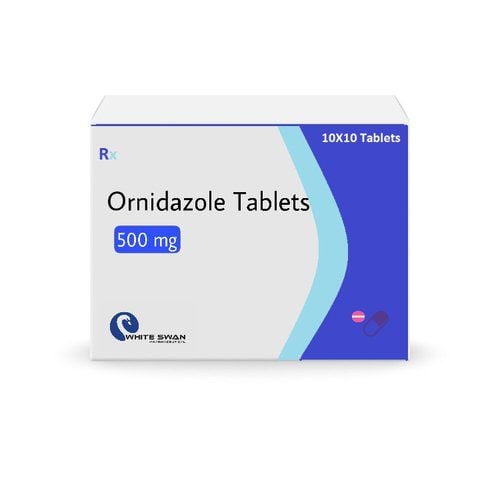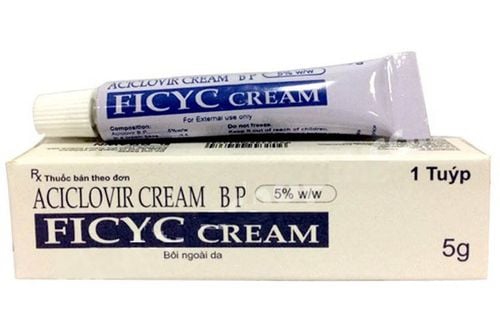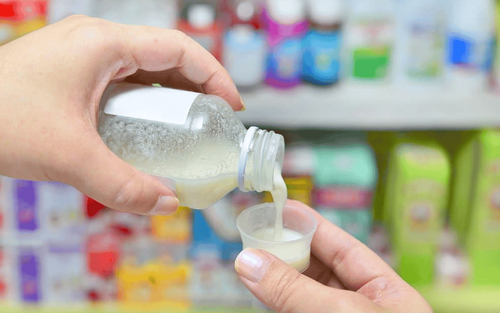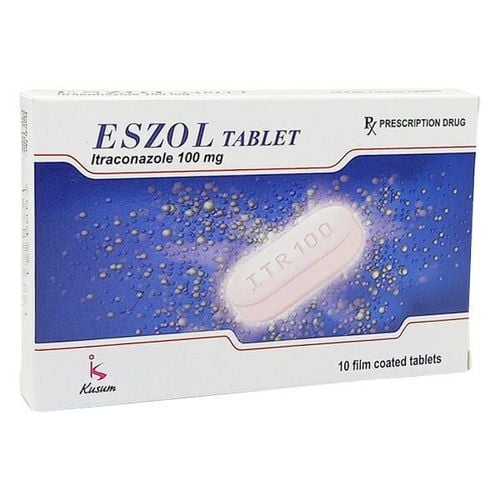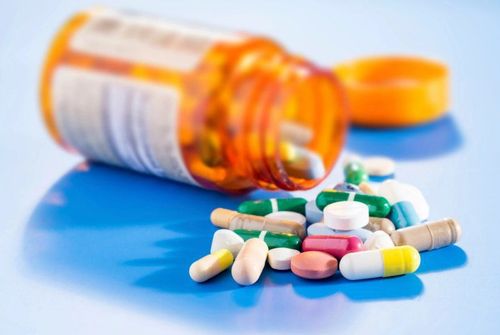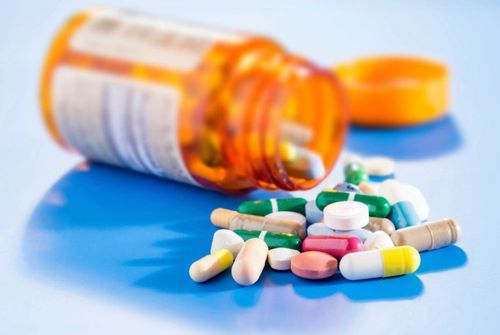This is an automatically translated article.
Tedavi is known as an antibiotic used to treat bacterial problems in the upper and lower respiratory tract. In the article below, readers will learn the most complete information related to Tedavi such as what Tedavi does, instructions for use and dosage...
1. What you need to know about Tedavi
Tedavi is a drug in the group of antibiotics with the ability to treat parasites, antivirals, antifungals and fight bacterial infections. Tedavi's main ingredients include two active ingredients: Amoxicillin 400mg per 5ml and Clavulanic 57mg per 5ml.
Currently, Tedavi medicine is prepared in powder form mixed into an oral mixture (commonly known as syrup) with packaging in bottle form, each bottle is 70ml.
1.1.What is the pharmacodynamics of Tedavi? Because it is a combination product between two active antibiotics Amoxicillin and Clavulanic, the mixture of Tedavi drugs will have pharmacodynamics from them, specifically as follows:
For Amoxicillin, this is an antibiotic of the aminopenicillin group with antibacterial spectrum. relatively wide. For Clavulanic, this active ingredient is a regular antibiotic combined with Amoxicilline with a broad spectrum of antibacterial activity. 1.2. Learn the pharmacokinetics of the drug Tedavi Amoxicillin can persist in the acidic environment in the gastric juice and be completely and quickly absorbed into the body without being affected by the food you eat. After entering the body, amoxicillin is rapidly distributed into most fluids, with the exception of brain tissue and cerebrospinal fluid. However, if the meninges are inflamed, amoxicillin can easily diffuse inward.
Approximately 60% of amoxicilline will be excreted in its parent form in the urine after about 6 to 8 hours of existence. This active ingredient also has a mean half-life of 1 hour, often longer in neonates or the elderly. In particular, in patients with renal failure, Amoxicillin has an extended half-life from 7 hours to 20 hours.
As for the Clavulanic ingredient, this is the active ingredient that is easily absorbed through the oral route and peaks in serum concentrations about 1 to 2 hours after taking Tedavi. Like Amoxicillin, Clavulanic is also not affected by food during absorption and about 30% to 40% of Clavulanic will be excreted in the urine.
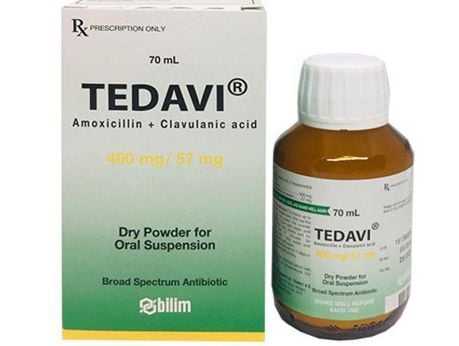
Thuốc Tedavi là thuốc kháng sinh có công dụng chống lại tình trạng nhiễm khuẩn
2. Is Tedavi an antibiotic and what effect does Tedavi have on respiratory diseases?
Tedavi is an antibiotic with a combination formula of two other antibiotic active ingredients, usually used for short-term treatment (up to two weeks). The drug is often prescribed by doctors to treat infections caused by bacteria that produce beta-lactamase but do not respond to a single dose of penicillin.
Some specific cases where Tedavi is prescribed are:
Patients are experiencing severe infections in the upper respiratory tract such as sinusitis, tonsillitis ... that do not respond well to conventional treatment. Patients with lower respiratory tract infections related to Moraxella catarrhalis and H.influenzae strains such as pneumonia, bronchitis (acute and chronic). Serious infections of the urinary tract and genitals associated with E.coli , Enterobacter and Klebsiella bacteria such as urethritis , cystitis , pyelonephritis (an infection of the female genital tract) . Patients with skin or soft tissue infections such as boils, abscesses, wound infections, cellulitis or insect bites. Infections of bones/joints and molars. Infection after surgery, especially in obstetrics.
3. Tedavi and contraindications
Like many other antibiotics, Tedavi will obviously have groups of people that should be avoided, namely:
People who have an allergic reaction to any of the ingredients in Tedavi, especially to the active ingredient. Amoxicillin and Clavulanic as well as cross-allergy with other antibiotics of the same Beta-lactam family. People with a history of jaundice or liver problems (such as liver failure) related to penicillin use. The patient has an increase in the number of mononuclear cells due to lymphoma or infection.
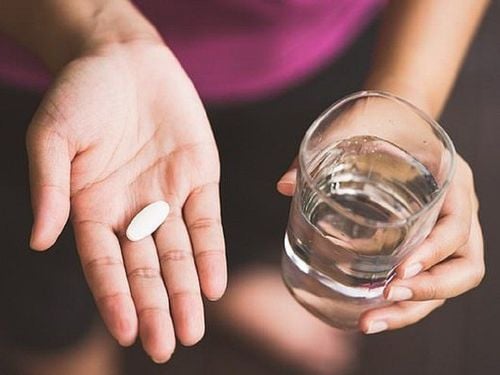
Người bệnh nên hỏi ý kiến bác sĩ trước khi sử dụng thuốc Tedavi
4. What is the usual dose of Tedavi and how to use it?
To help readers easily calculate, the article will mention the usual dose of Tedavi in units of kg of body weight and days. Depending on the group of subjects, the dose of Tedavi will be indicated differently.
For children under 1 year old:
Recommended dosage is 30mg of amoxicillin active ingredient per kg of body weight daily. In the case of a child with a serious bacterial infection, it can be increased to 45 mg of Amoxicillin daily per kilogram of the baby. For children from 1 year to 6 years old and weighing between 10kg and 18kg. In mild and moderate cases, the baby can take about 2.5 - 5ml of Tedavi medicine per day. This dose in severe infections is 5 to 10 ml of the drug. For children from 6 to 12 years old and weighing from 18kg to 40kg: If the child is in a state of infection that is not too serious, it is recommended to maintain the daily dose of 5 to 10ml. However, if the condition does not improve, you can increase to 10ml to 20ml of the drug, but you need to consult your doctor first if you want to adjust.
5. What side effects does Tedavi cause?
Most of the side effects of Tedavi are usually mild and transient, most notably nausea and vomiting, diarrhea, itchy skin rash... Some rare side effects More common symptoms of Tedavi are eosinophilia, cholestatic jaundice, hepatitis, Candida vaginitis, fatigue and headache...
In fact, only about 3% of people have it. Tedavi side effects necessitate discontinuation of drug therapy due to serious side effects, which may include:
Anaphylactic reactions and Quincke's edema all over the body. Patients present with pseudomembranous colitis or interstitial nephritis... Meet Stevens Johnson syndrome on the skin, epidermal necrolysis, exfoliative dermatitis... It can be said that Tedavi is a combination of two active ingredients. Antibiotics have brought many effects in the treatment of diseases, namely bacterial/infectious diseases. To ensure effective treatment and avoid side effects, patients need to carefully read the instructions for use or as directed by a doctor or pharmacist.
Follow Vinmec International General Hospital website to get more health, nutrition and beauty information to protect the health of yourself and your loved ones in your family.
Please dial HOTLINE for more information or register for an appointment HERE. Download MyVinmec app to make appointments faster and to manage your bookings easily.




